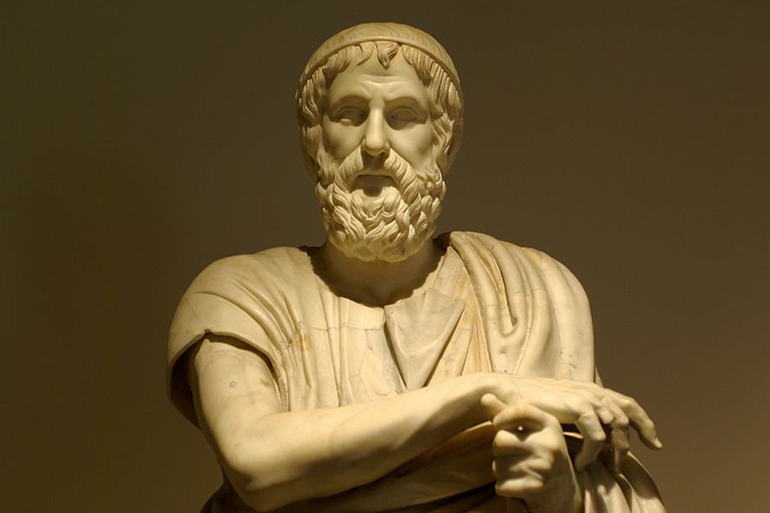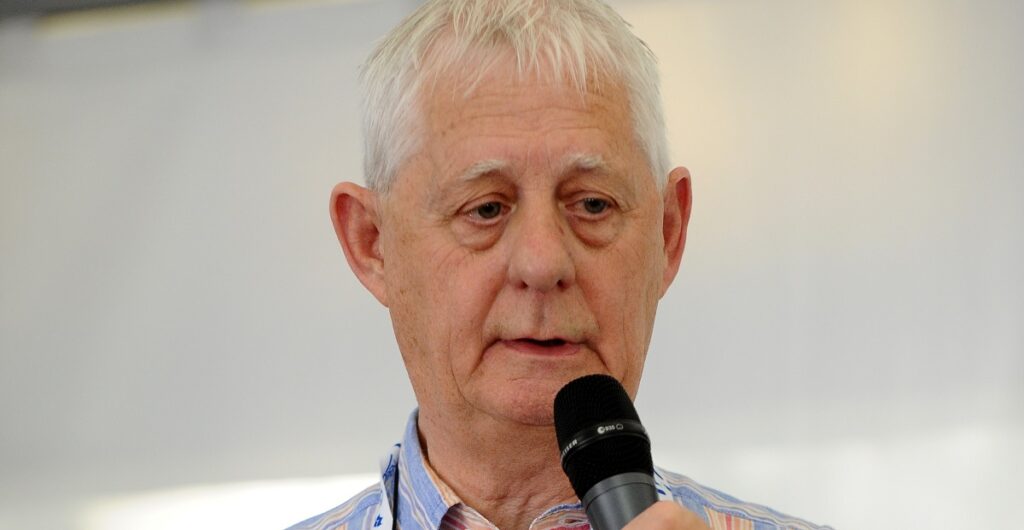Albert Oehlen Quotes

Early Life and Career
Born in Germany in 1954
Born in 1954 in Ratingen, North Rhine-Westphalia, Germany, Albert Oehlen comes from a family of artists.
Hans von Oehlen, his grandfather, was an art historian and art dealer who had connections to the Expressionist movement.
His father, Bernhard Oehlen, is also an artist known for his figurative work and conceptual strategies.
Oehlen’s mother, Renate Pätzold-Oehlen, comes from a family of artists as well.
Growing up in such an artistic environment influenced Albert Oehlen’s interest in art from a young age.
In the early 1970s, he began studying at the Düsseldorf Academy of Fine Arts, where his father also studied and taught.
However, due to family dynamics, Albert Oehlen left the academy without completing his studies.
Oehlen’s early work was influenced by various art movements, including Abstract Expressionism, Pop Art, and Neo-Expressionism.
In 1985, he held his first solo exhibition in Düsseldorf.
Throughout the 1980s and 1990s, Oehlen continued to explore and experiment with different styles and techniques in his work.
In 2009, a major retrospective of his work was exhibited at the Kunsthalle Krems in Austria.
Oehlen’s artistic style is characterized by his use of bold colors and dynamic brushstrokes.
Started creating art at a young age
Oehlen was born in 1954 in Kassel, Germany.
Influenced by his father, a dentist and painter, he began creating art at a young age.
He developed an interest in graffiti and began drawing comic book-inspired characters and scenes.
The influence of comics and graffiti can be seen in the early work of Oehlen, characterized by its raw, expressive style.
In his teenage years, he experimented with various mediums, including oil paints, acrylics, and spray paint.
Oehlen attended the Academy of Fine Arts in Düsseldorf from 1977 to 1980.
During this time, he became acquainted with other notable artists such as Martin Kippenberger and Georg Baselitz.
The early career of Oehlen was marked by his involvement in various art movements, including Neo-Expressionism and the ‘Junger Wilde’ movement in Germany.
In the 1980s, he gained recognition for his work at exhibitions in galleries such as the Galerie Gerd Hartwig in Düsseldorf.
Influences and Style
Mentorship from Georg Baselitz
Georg Baselitz’s influence on my work is a significant factor that has shaped my style and artistic vision.
Baselitz, a German painter and sculptor, was a key figure in the development of Expressionism in Germany during the 1960s.
His early work explored themes of violence, brutality, and the human condition, which I find fascinating and have drawn inspiration from.
The way he manipulated and distorted forms to convey emotions resonates with me, as I also experiment with similar techniques to express my own emotions and experiences.
Baselitz’s emphasis on expressive brushstrokes and impulsive mark-making has been an influence on my gestural painting style, which prioritizes the process of creation over the resulting product.
His rejection of traditional representation in favor of a more raw and immediate visual language aligns with my own desire to push boundaries and challenge conventional norms in art.
The mentorship I received from Baselitz has been invaluable in shaping my artistic approach.
- He encouraged me to take risks and explore unconventional themes in my work, which has led to some of my most innovative and thought-provoking pieces.
- Baselitz also introduced me to the concept of “anti-form,” a rejection of traditional forms and structures in art, which has been a significant influence on my own creative process.
My time under Baselitz’s guidance allowed me to develop a unique voice and style that blends elements of Expressionism with a more contemporary, irreverent approach.
This blend of traditional and modern influences is evident in the use of bold colors and abstract forms in my work, which often challenge the viewer to reevaluate their perceptions and understanding of the world around them.
In many ways, Baselitz’s influence on my style can be seen as a bridge between the radical experimentation of Expressionism and the more playful, subversive spirit of contemporary art.
This fusion of past and present has been a driving force in shaping my artistic vision and continues to inspire new directions and explorations in my work.
Pioneered the abstract expressionism movement in Germany
Albert Oehlen’s artistic style and influences can be seen as a culmination of his experiences, interests, and relationships with other artists.
Oehlen’s work was heavily influenced by the abstract expressionism movement, which he helped pioneer in Germany during the 1970s and 1980s.
He was part of the Hamburg-based group of artists known as the “Hamburger Schule,” who were instrumental in introducing American art trends to Germany.
Oehlen’s early work was characterized by his use of bold, expressive brushstrokes and vibrant colors, reminiscent of action painting.
However, he soon developed a distinctive style that incorporated elements of figuration, abstraction, and irony.
His paintings often feature geometric shapes, fragmented forms, and scribbled marks, which are then overlaid with smooth, flat areas of color.
Oehlen’s work has been influenced by a wide range of artists, including Jackson Pollock, Willem de Kooning, and Franz Kline.
He has also cited the influence of German Expressionism, particularly the works of Egon Schiele and Oskar Kokoschka.
Oehlen’s style is often described as “anti-expressionist,” reflecting his skepticism towards the idea of art as a form of personal expression.
Instead, he seeks to create a sense of distance between himself and his work, often using humor and irony to subvert traditional notions of artistic production.
Oehlen’s influence can be seen in the work of younger artists, who have adopted elements of his style and approach to create their own unique visions.
Some notable examples of artists influenced by Oehlen include:
- Gerhard Richter: A fellow German artist known for his abstracted, photo-based paintings.
- Tomas Saraceno: An Argentine-Italian artist who creates large-scale sculptures and installations that explore the relationship between art and science.
- Julie Mehretu: An Ethiopian-American artist known for her vibrant, abstract paintings and prints that combine elements of figuration and landscape.
Oehlen’s continued to push the boundaries of contemporary art, exploring new forms and themes in his work while remaining committed to his unique vision.
Critiques and Accolades
Featured at major museums worldwide, including MoMA and Tate Modern
The work of Albert Oehlen has been widely recognized and celebrated for its innovative and provocative take on modern art, with critiques and accolades pouring in from around the world.
Much of his work is featured at major museums worldwide, including the Museum of Modern Art (MoMA) in New York City and the Tate Modern in London, solidifying his position as one of the leading figures in contemporary art.
Oehlen’s bold and often abstract paintings have been hailed by critics for their raw emotion and unbridled creativity, pushing the boundaries of what is possible within the medium.
His use of vibrant colors and distorted forms has been particularly praised for its ability to evoke a sense of unease and uncertainty in the viewer, challenging traditional notions of beauty and composition.
As one art critic noted, “Oehlen’s work is like nothing else out there – it’s raw, it’s visceral, and it’s unapologetic.”
This unflinching approach to art has earned Oehlen numerous awards and accolades throughout his career, including the prestigious Prix Marcel Duchamp from the Centre Pompidou in Paris.
His work continues to be celebrated by audiences worldwide, with exhibitions at top museums and galleries serving as a testament to his enduring influence on modern art.
In addition to MoMA and the Tate Modern, Oehlen’s work has also been featured at other prominent institutions such as the Guggenheim Museum in Bilbao, Spain; the Walker Art Center in Minneapolis, Minnesota; and the Musee d’Art Moderne de la Ville de Paris.
Cited as an influence by younger artists like Julian Schnabel and Cecily Brown
Critiques and accolades have consistently surrounded the work of Albert Oehlen throughout his illustrious career, earning him widespread recognition as a leading figure in contemporary art.
His innovative and often provocative style has been cited as an influence by younger artists such as Julian Schnabel and Cecily Brown, who have credited Oehlen’s bold and unapologetic approach to painting with inspiring their own work.
Oehlen’s use of expressionism and abstract art has been particularly noteworthy, as he often combines these seemingly disparate styles in innovative ways that challenge the viewer’s perceptions.
One of Oehlen’s most notable works, “Das Auge ist des Herrn” (1991), exemplifies his ability to merge different artistic traditions and create something truly unique.
This piece, which features a monochromatic palette and a mix of abstract and figurative elements, showcases Oehlen’s skill at balancing seemingly opposing styles and creating a cohesive visual language.
Oehlen’s influence can also be seen in his use of drawing, which he often employs as a means of exploring the relationship between art and the viewer.
His willingness to push boundaries and challenge conventional norms has made him a respected and admired figure within the art world, earning him numerous accolades and awards for his contributions to contemporary art.
As Oehlen continues to create innovative and thought-provoking works of art, it is clear that he will remain an important influence on younger artists for years to come.
- Adequate Quotes - October 20, 2024
- Adherence Quotes - October 20, 2024
- Adhere Quotes - October 20, 2024



